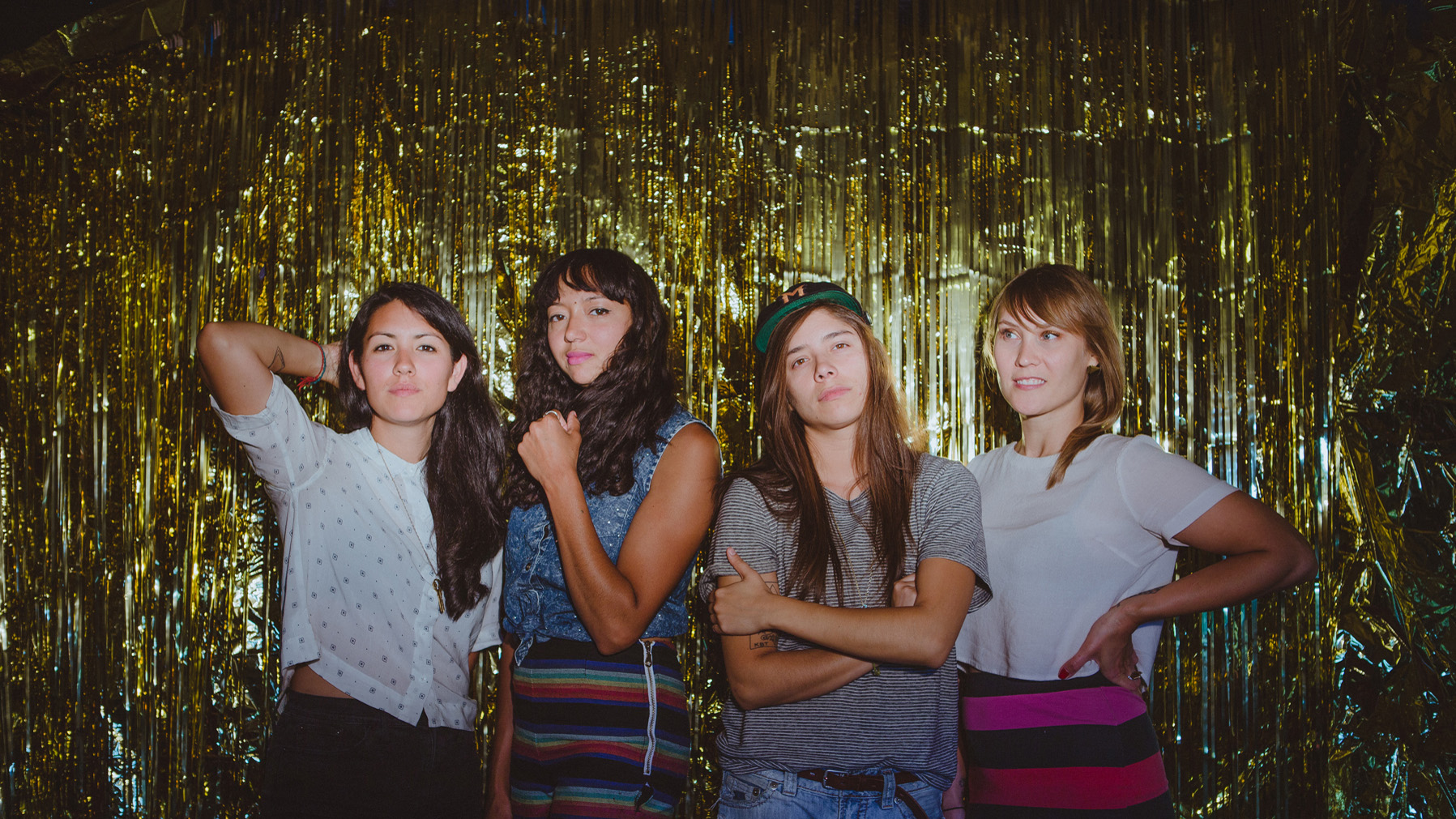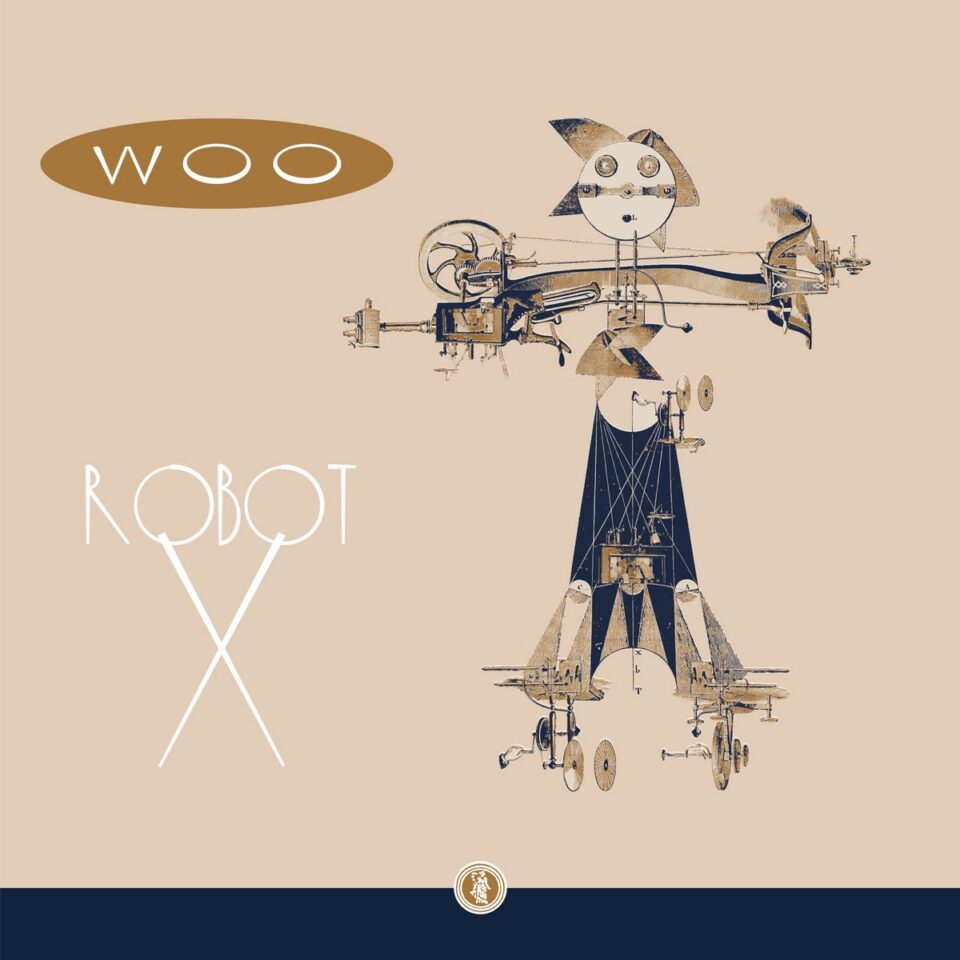MEMBERS: Shana Cleveland (guitar/vocals), Marian Li-Pino (drums), Lena Simon (bass), Alice Sandahl (keyboards)
FOUNDED: June 2012
FROM: Seattle, Washington
YOU MIGHT KNOW THEM FROM: The surf-rock boogie of their debut LP, 2013’s It’s Alive
NOW: Blasting sea foam across the US and Europe behind their Ty Segall-produced sophomore LP Weirdo Shrine, out now on Hardly Art
November 5, 2013, was the tilting point for Shana Cleveland and her band, La Luz. On that day, the Seattle quartet were in a near-fatal van crash while on tour with psychedelic rockers of Montreal. And while they eventually recuperated and hit the road again, the accident left its mark. “The crash affected us so much…it instills this sort of fear in you that’s hard to shake off,” says Cleveland. To make matters worse, several of her friends were killed in a mass shooting in Seattle some time later.
As you might expect, loss—and its menacing grasp—casts an absorbing pall over Weirdo Shrine, La Luz’s second LP. But despite the darkness that Cleveland says was “seeping in” to the album’s writing, Weirdo Shrine sees no decline in the quartet’s musicianship.
Instead, they used their tragedies as dark prisms through which Weirdo Shrine’s radiant melodies shine. Admirers of The Ventures, Shadowy Men on a Shadowy Planet, The Crystals, and Dick Dale should quickly connect with the LP, which was produced by garage hero Ty Segall. Whereas La Luz’s first EP, Damp Face, and their debut album, It’s Alive, showcase a raw and somewhat untapped energy, the new lineup addition of Lena Simon (bass) inches the band’s restrictive style to the nose of the board.
Segall’s characteristic fuzz wriggles into Cleveland’s guitar work on faster songs like “Hey Papi” and “Black Hole, Weirdo Shrine,” while a strong undercurrent of classic surf-rock instrumentation and dark lyricism (inspired by Charles Burns’ graphic novel Black Hole and the postmodern poet Richard Brautigan) yanks the angelic harmonies into a vortex.
Loss—and its menacing grasp—casts an absorbing pall over Weirdo Shrine.
La Luz mapped that vortex with Segall in an old San Dimas, California, surfboard factory (of all places). “We spent a full day on mic placement,” says Cleveland. “I think that extra time really helped capture a good room-sound that helps the album sound different from the last one.”
Segall’s analog production knowhow and proclivity for redlined guitar sounds made the sessions relatively painless, says Cleveland. Being good pals with the prolific artist also helped.
“It felt really natural to work with Ty, especially because his music was a big influence on me,” says Cleveland. “I felt like he had a lot of the same ideas about capturing our live energy and I think all of his recordings do that really well. It just felt like a bunch of friends going into the studio.”
Going forward, La Luz are trying to share those positive feelings with their fans. In fact, before their release show at The Showbox in Seattle, they hawked tickets around town in person. Cleveland’s tone noticeably brightens when talking about the series of DIY promotional events.
“That was awesome! The first day we went out there, we met what might be our youngest fan. This eight-year-old girl came up and was so excited to meet us in person and said it was going to be her first concert. She yelled, ‘This is the best day of my life!’” It actually makes a whole lot of sense that an eight-year-old girl is such a big fan of a dark surf-rock band like La Luz. The group oozes verisimilitude and their fearless songs retain a sort of zen philosophy that urges the listener to brave the dark skies gathering overhead. FL









